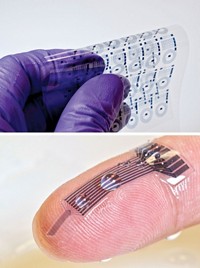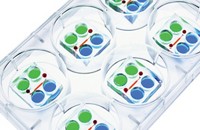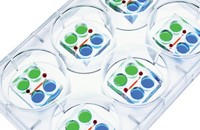Advertisement
Grab your lab coat. Let's get started
Welcome!
Welcome!
Create an account below to get 6 C&EN articles per month, receive newsletters and more - all free.
It seems this is your first time logging in online. Please enter the following information to continue.
As an ACS member you automatically get access to this site. All we need is few more details to create your reading experience.
Not you? Sign in with a different account.
Not you? Sign in with a different account.
ERROR 1
ERROR 1
ERROR 2
ERROR 2
ERROR 2
ERROR 2
ERROR 2
Password and Confirm password must match.
If you have an ACS member number, please enter it here so we can link this account to your membership. (optional)
ERROR 2
ACS values your privacy. By submitting your information, you are gaining access to C&EN and subscribing to our weekly newsletter. We use the information you provide to make your reading experience better, and we will never sell your data to third party members.
3-D Printing
Yellow food coloring helps researchers print organlike structures
Chemical insight allows researchers to mimic organs’ complex structures and blood vessel networks
by Bethany Halford
May 2, 2019
| A version of this story appeared in
Volume 97, Issue 18

Tartrazine, better known as food coloring FD&C Yellow 5, lends its sunny hue to foods like powdered chicken broth and pancake mix. But the compound may someday be key to 3-D printing new organs. Researchers have shown they can create structures with blood-vessel networks and organ-like topologies using biocompatible hydrogels loaded with tartrazine (Science 2019, DOI: 10.1126/science.aav9750).
Rice University’s Jordan S. Miller, University of Washington’s Kelly R. Stevens, and colleagues printed these structures using an established technique used by the microprocessor industry and others called projection stereolithography. The technique involves polymerizing material using blue light, one thin layer of a time. Going from bottom to top, the layers get built up to create the final structure.
To make the technique work, researchers must keep the light confined to a single layer, so it doesn’t penetrate layers put down previously, polymerizing them in off-target spots. The microprocessor industry prevents such unwanted polymerization with additives that absorb the light. But these chemicals are toxic, making them incompatible with cells.

Miller says the team realized they could make the technique work for bioprinting by simply finding a biocompatible photoabsorber. “Tartrazine was actually the first one that we tried,” he says. “I literally went to the grocery store and got some food coloring.”
“It just absorbs blue light. It’s as simple as that,” Stevens explains. “All you’re doing is absorbing some of that light so that it doesn’t shine throughout everything.”
“This is remarkably creative work that enables intertwined vascular networks to be rapidly defined with unprecedented geometrical sophistication,” says Hayden Taylor who studies 3-D printing for making biological scaffolds at the University of California, Berkeley.
Miller and Stevens’ team used the technique to create several different architectures, including structures seeded with liver cells that also have networks that deliver nutrients to the cells. They found when they implanted these liver-mimicking structures in mice with damaged livers, the cells remained alive and performing one of their crucial functions two weeks later when the researchers removed the structures.
Jennifer Lewis, a bioprinting expert at Harvard University says the work “represents an important advance in the fabrication of vascularized human tissues.” But she points out that there are still challenges to overcome using this strategy, such as patterning the multiple cell types, densities, and microvascular networks found in human organs.
Miller and Stevens say they’re working to address those challenges as well as others. For example, they’d like to make structures one-tenth the size they currently can.
Miller also notes that the team is using open source hardware and software to generate their printers. “We are very excited to put our ideas out there into the open-source world and we do expect people to use it in new ways that will help push the field forward,” he says.





Join the conversation
Contact the reporter
Submit a Letter to the Editor for publication
Engage with us on Twitter